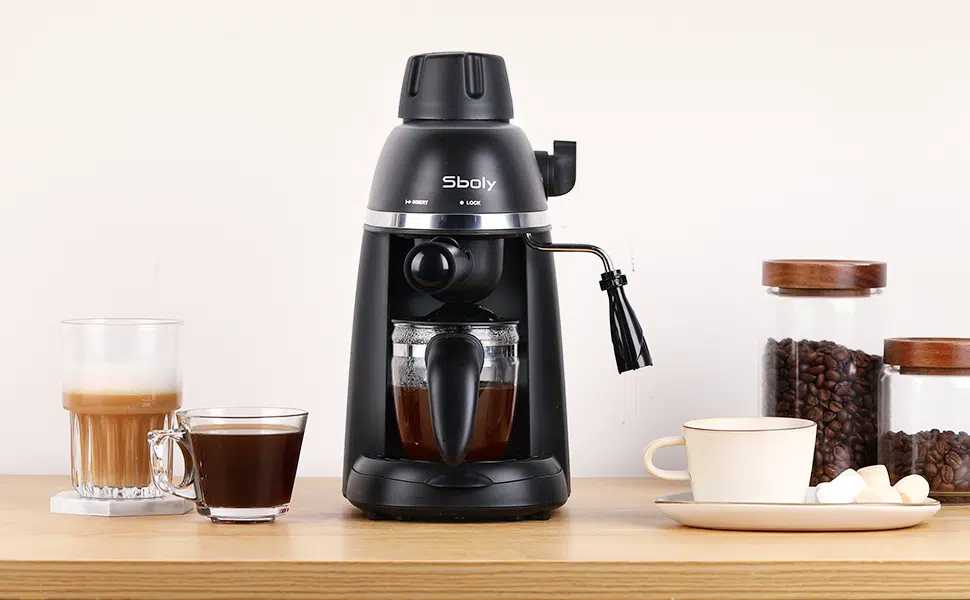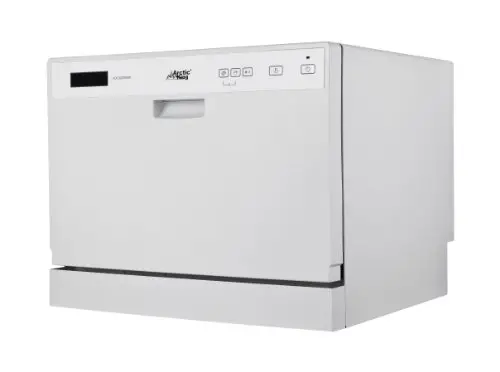6 Best Pasta Machine for Polymer Clay in 2022 (Buying Guide)
Regardless of whether you are an artist or a hobbyist, using a pasta roller to condition your polymer clay enables you to get it to a workable texture. Since polymer clays are sold in blocks and bricks, it should be transformed, flattened, and rolled to make it supple, flexible, and smooth.
Condition your polymer clay with the help of the best pasta machine to remove trapped air and make it easier for you to mix ingredients evenly. If you want machine durability and quality results at the same time, you will have to pay more.
With that, the question you have to answer for yourself is how much quality are you willing to pay for? This quick guide should assist you in finding the best machine for you!
Best Overall
Marcato 8340
Up to 150-millimeters wide – 10 different thickness settings – 16 removable arms – 9 interchangeable wheels
Best Budget
Makin’s clay
7-inch wide clay path – 9 thickness settings – Durable stainless steel – Lightweight materials
Contents
The Best Pasta Machine for Polymer Clay
Now that you have an idea of which of the important features to watch out for when buying a machine, take a look at this quick review of the best hand crank pasta maker that should help you condition, mix, and cut your polymer clay to prepare it for your next clay project!
1. Marcato 8340 Atlas Pasta Dough Roller – Best Overall
You can roll your polymer clay evenly up to 150-millimeters wide in minutes and, at the same time, achieve consistent texture with the Marcato pasta dough roller.
Choose from its 10 different thickness settings, from anywhere between 0.6 millimeters to 4.8 millimeters. It allows attachment for a pasta drive motor or any of its intricate pasta cutting accessories. And it works simply with straightforward features yet produces the best results.
Apart from its wide choice of thickness settings, the pasta dough roller also features a pasta drying rack with 16 removable arms for easy transportation. It can hold up to 2 kilograms of pasta, imagine how much polymer clay it can accommodate!
Cut your polymer clay with the pasta machine’s bike equipped with 9 interchangeable wheels that are easy to slide through the material. To complete the package, a dispenser, and a rolling pin with an anodized aluminum alloy is provided for stable cutting.
The only downside that most professionals are concerned about the machine is the replacement of metal scraper blades with white plastic-tipped ones. With this, it is quite hard to clean the blades, especially the dough wraps itself around the flattening rollers.
Despite the issue with the material used for the blades, the Marcato pasta dough roller allows you to flatten and condition your polymer clay to prepare it for molding and baking!
In addition to that, it allows for smooth cranking and uses durable external casing, which makes it sturdy compared to other economic pasta machines in the market.
- Good
- Allows for attachment of individual accessories
- Wide range of thickness options
- Interchangeable wheels for varied molding calibration
- Bad
- White plastic-tipped blades are quite difficult to clean
2. Makin’s Professional Ultimate Clay Machine – Budget Pick
If you are looking for a machine that enables you to condition your clay conveniently without breaking the bank, the Makin’s clay machine is the ultimate partner for you with its option for attaching a clay machine roller motor.
It is suitable for quick mixing and blending of colors, making thin, and even clay textures. With its 7-inch wide clay path, you can insert more amount of clay than any other machine will allow you to, making it faster to condition bricks after bricks.
Furthermore, it has 9 thickness settings that enhance your clay conditioning process. With more options, you have the opportunity to personalize the thickness of clay, depending on the model you are planning to create.
Apart from that, the machine features a clamp that allows you to attach it onto the worktable. Although found to be useful, many users replaced it with a C clamp for extra reinforcement.
It is made of stainless steel, which makes it easier to clean every time after use with a single wipe of a damp cloth. Thus, it also ensures durability and corrosion-resistance if properly taken care of.
For those who are traveling to clay classes and workshops or seminars, the Makin’s clay machine is the perfect fit for you! It can be hand-carried and transported easily due to the materials and build of the machine.
- Good
- Firmly attaches on a worktable or countertop through a sturdy clamp
- Made of durable stainless steel that resists corrosion
- Designed with lightweight materials
- It can be hand-carried and easily transported
- Bad
- Some issues regarding the attachment of the handle knob
3. Nuvantee Pasta Maker with Adjustable Thickness
For working with polymer clay, the Nuvantee pasta maker is a crowd-favorite and positively reviewed option. Its features, durability, and design surely make it suitable for polymer clay.
The durable materials ensure that this pasta maker will last for a very long time. Its nickel-plated rollers can churn out both pasta and clay however you want them to. The rollers are also extremely smooth. They never get stuck or delayed while working.
For an artist working with polymer clay, this machine is a dream come true. Seven different thickness options will surely help you, no matter the type of project you are working on. No matter how delicate or thick you want your final work to be, this pasta machine from Nuvantee can come in handy.
Control is something you definitely need when you are working with polymer clay. The hand crank lets you control the speed and flow of the clay rolling to ensure a smoother outcome. As the table clamp is removable, you can work with it however you prefer.
- Good
- Made of durable materials and will last a long time
- Rollers never get stuck or squeaky
- Seven different thickness options for the artist in you
- Hand crank offers better control and smoother use
- Table clamp can be removed
- Bad
- Tends to get rusty quickly
- Cleaning it is extremely difficult
4. Marcato 8320 Atlas Pasta Machine – Premium Pick
Hand-crank models all have similar features, styles, and of course, functionality. Yet to top over the cheapest and most convenient is the Marcato 8320 pasta machine. The machine easily blows the other brands when it comes to the ease of assembly, use, and cleaning.
This pasta machine features 10 thickness settings and boasts the widest and narrowest settings among all the hand-crank models that range from 0.02 inches to 0.24 inches. Apart from that, its adjustment knob allows for easy operation to move the distance between the rollers, which determines the clay thickness.
It is a classic model made of high-grade and high-quality chrome steel with other colorful options made of aluminum. The rollers are constructed and designed with anodized aluminum for extra strength and durability compared to the most common coatings used.
Considering the quality of Marcato 8320 as well as the results it produces over a long period of use, it is reasonably priced to be competitive in the market. For swift operation and quality clay texture results, go for the unparalleled hand-crank machine by Marcato.
For those who are looking for a stay-put machine for home use as well as for professional clay-molding use, this pasta machine is the right one for you. Despite its price tag, you are guaranteed to reap the investment once you see the end results!
- Good
- Features a paper-thin 0.02 thickness setting
- Consists of an easy sliding adjustment knob
- Made of high-grade and high-quality chrome steel
- Bad
- Quite heavy compared to other machines which discourage transportation
5. Sailnovo Highest Quality 150mm Pasta Machine
Straight-forward, with great features for ergonomic operations, the Sailnovo pasta maker and roller ensure a wealth of ease of use as well as delivering exceptional results.
Yes, you read that right! The ease of use begins with its easy turning crank arm and its sturdy clamp for attaching onto any countertop or worktable.
Since clay is like pasta dough once conditioned, the pasta maker allows you to mold it into the thickness you wish it to be for a particular purpose.
With its 7 thickness settings, you can choose from levels 4 to 5 to make spaghetti or fettuccine-like thick clay. Conversely, levels 6 to 7 are used for ravioli-like thickness for your clay.
It is made of high-quality stainless steel that makes it a champion in the kitchen or your craft area. With a sturdy extruder, snug-fitting crank arm, and heat-treated gear, the machine is guaranteed to be useful for a long time.
Of course, regular cleaning should be applied to prevent any damage from occurring. The steel used to make it allows for easy cleaning. Apart from that, it is easy to disassemble when it’s time to wash it.
- Good
- The crank arm is designed for ergonomic turning
- Attaches to a countertop or worktable with the use of a clamp
- Easily disassembles yet snug-fitting parts
- Bad
- The external casing easily corrodes when constantly washed
6. VonShef Pasta Maker
It does not matter if you are seasoned in dealing with clay or a newbie who is just starting to develop enthusiasm with clay molding. You will recognize the VonShef pasta maker delivers exceptional results and does what it is designed to do.
It highlights its 3 major features, which are used for kneading, rolling, and cutting. When mixing colors to either create gradient shades or totally combine hues, the kneading unit eases the procedure and, at the same time, produces the perfect thickness depending on your requirements.
It has two blades wherein one can form 2 to 6.6-millimeter thickness, and the other is of 1 to 1.5-millimeter thickness.
To ensure the production of even textured clay, clamp the pasta machine onto the worktable or countertop you are working on. It’ll also facilitate easy cranking and cutting the clay into pieces.
Apart from the clamp, another feature that the pasta machine boasts of is its solid metallic structure. The clamp and the material used to create the body can withstand any force due to cranking.
However, the only downside of the machine is its inability to clamp down on thick counters. Aside from that, it should enhance your overall clay conditioning experience, especially if you are new to the hobby!
- Good
- Consist of 2 blades that presents for a differentiated thickness setting
- Straightforward features like crank arm enable easy assembly and disassembly
- Bad
- The clamp included in the unit may not be able to clamp firmly on thick counters
What to Look for in a Pasta Machine
From the material used to construct the pasta roller to the features you must watch out for, here are the major things to focus on to make sure you will get ahold of and invest in the right machine.
Construction Material
From aluminum to anodized aluminum alloy and high-quality stainless steel, there are plenty of materials used to manufacture a pasta machine.
Yet, the ones that are popularly used by many professional clay artists are the ones made of aluminum and steel. You should base the choice of body built on the type of clay you will mostly work with.
Clay Path
The clay path is closely related to the thickness settings of a machine. If the machine you are looking at enables you to choose from more than 5 thickness settings, then you have to make sure the clay path is wide enough to ensure the even spread of the clay.
Thickness Settings
The smallest thickness setting you will find from a pasta maker is two, with ten being the most options offered. In conditioning clay, it almost does not matter if there are fewer options to choose from.
Yet, for those who wish to use the machine for molding sheets, it is advisable to go for the ones with the thickest settings.
Features
Just like any other machine, there is no pasta sheeter machine out there that has everything you need. When you are looking for a machine, you must not go for the ones that are feature-rich.
Instead, you have to determine your needs when it comes to rolling, mixing, and cutting. Here are some of the criteria that should allow you to gauge which features are most important to you.
- Hands-free claying or manual pasta press
- Easiest cranking
- Thinnest or thickest sheets
- Widest sheets
- Ease of cleaning
- For sticky clay or stiff clay
- For travel or remote use
- Upgradable and customizable
Can You Use a Pasta Machine to Roll Out Cookie Dough?
Cookies are loved by everyone regardless of the type of person they are. The range of flavors and types are endless, which ensures there is something for everyone.
Baking your own cookies is always fun, and definitely more rewarding than purchasing some. For many, baking cookies can be daunting and time-consuming. That is why we are here to address a very frequently made inquiry – can a pasta machine be used to roll cookie dough?
It is absolutely possible to roll cookie dough with a pasta machine. Pasta machines have several other uses besides churning out fresh pasta, and this is one of them.
After you are done mixing all the ingredients, you will get a final cookie dough that you need to roll out, make separate cookies from, and bake.
We know that it is time-consuming to roll out the dough bit by bit. This is where the pasta machine comes in. You can put your final dough through the machine. Then, you will get smooth and evenly rolled out cookie dough that you can now bake to your heart’s content.
The rolled-out dough is best for cookies that are cut and baked in a decorative shape.
How to Clean Polymer Clay Pasta Machine
Anyone who loves to work, play, or create with polymer clay knows the wonders a pasta machine can do. Polymer clay can be easily rolled out with a pasta machine in lieu of your hand or a roller pin, both of which are quite time-consuming.
Cleaning the pasta machine that you have used for polymer clay is very important. The cleaning process is fairly easy. It does not take too much time. The materials that you will need for cleaning are –
- A damp cloth
- A toothpick, or a thin but strong stick, or a skewer
- Rubbing alcohol
- A screwdriver
Let us take a look at the best and easiest way to clean a pasta machine that has been used to roll out polymer clay.
- First, clean the exterior of the pasta machine and remove any dirt or dried-up clay that may have formed.
- Then, you will need to clean the most important part, the blade. You can clean the blade by scraping any remaining clay with a skewer, toothpick, or a dampened cotton swab.
- After you are done scraping, wipe the blades clean with a soft cloth dampened with rubbing alcohol.
- Roll the blade and clean as you go to make sure that the whole blade has been cleaned.
- Do not forget to reach all the nooks and crannies. This is where the cotton swab will help. Simply dip the cotton swab in alcohol and use it to clean corners.
- After you are done, wipe the whole pasta machine with a damp cloth.
Now you know how to clean a pasta machine used for polymer clay. Remember, not cleaning regularly will lead to color mixing and dirt buildup, which will hurt your projects greatly. We always recommend cleaning after each use with polymer clay.
Final Words
To obtain the best pasta machine for polymer clay, you will have to know your needs for yourself. If you wish to bring the machine with you to classes, it is best to obtain a lightweight pasta maker with a less expensive price tag since you are just learning. Otherwise, go for the industrial-grade machines for everyday professional claying.
Frequently Asked Questions
u003cstrongu003eWhat else can you use a pasta machine for?u003c/strongu003e
You can also use a pasta machine for pie crust, crackers, egg roll wrappers, flatbread, graham crackers, cookie dough, marzipan, laminated dough, fondant cake icing, etc.
u003cstrongu003eIs a pasta machine worth it?u003c/strongu003e
Yes, if youu0026acirc;u0026#8364;u0026#8482;re in love with homemade pasta and ready to taste the delicious noodles in your day-to-day life, the pasta machine well worth the buck. More so, weu0026acirc;u0026#8364;u0026#8482;d say if you make pasta regularly, itu0026acirc;u0026#8364;u0026#8482;s going to be worth more. This machine will make your work easier and consistent.
u003cstrongu003eWhat type of pasta maker is best?u003c/strongu003e
As the day passes, we’re making our life automated centric or, in an easier sentence, technology-based. In that case, an electronic pasta maker is the best option; in our view, for example, Philips Pasta Maker can be a go-to option. It’ll make your pasta-making experience soothing, and most importantly, effortless.
u003cstrongu003eShould I buy a manual pasta maker or a pasta extruder?u003c/strongu003e
A manual pasta maker lets you create pasta in limited shapes, whereas a pasta extruder allows you to have pasta in different shapes. Squeezing the pasta u0026acirc;u0026#8364;u0026#339;dieu0026acirc;u0026#8364; inside the machine will lay out your desired shapes. You can make different shapes by changing the dies. So, if you want different shapes, go for extruders; otherwise, manual it is.
u003cstrongu003eHow much does a pasta maker typically cost?u003c/strongu003e
A pasta maker won’t break your bank. Typically, the cost starts from $30. But if you wish to put your hands on the best piece, around $100 can give you one.
u003cstrongu003eCan you make your own pasta without a machine?u003c/strongu003e
Obviously, you can make your own pasta without a machine, but time and patience are the keys to do this. Take a large bowl, pour flour in it, or onto a large clean kitchen table for making pasta. Create a well, put olive oil and eggs. Then keep mixing all the ingredients until a dough forms. Keep pressing the dough for 15 – 20 minutes until it becomes smooth, and add flour as required. The last step is wrapping the dough with plastic wrap and let the dough rest for 30 – 60 minutes. Voila! Your pasta is ready to be cooked.
u003cstrongu003eCan you make homemade pasta without a pasta maker?u003c/strongu003e
Yes, surely you can. The earlier question we answered solves this one as well. The process and formula are similar just as we said, you have to be patient. That’s all.
u003cstrongu003eAre electric pasta makers any good?u003c/strongu003e
Absolutely, they’re the best right now in the market. There’s no doubt that electric pasta makers come with a hefty price, but they are worth it. When you’re making homemade pasta, these are priceless tools to make the work effortless, faster, and soothing – basically doing all of your work.
u003cstrongu003eHow long will a pasta maker last with good care?u003c/strongu003e
With proper care and maintenance, a pasta maker can survive for years without losing performance and quality.u0026Acirc;u0026nbsp; But the electronic ones live a shorter lifespan because of electronic parts and wear-outs.
u003cstrongu003eWhat type of pasta will I be able to make?u003c/strongu003e
Well, there’s no straightforward answer to this because the options are endless, for example, Spaghetti, Four Cheese, Carbonara, Whole Wheat, and many other pasta dishes.
u003cstrongu003eCan you roll pasta by hand?u003c/strongu003e
Yes, if you fall short in any machine to do the rolling for you. You can do it using your hands the traditional way. With a knife and rolling pin, it’ll be a piece of cake.












